 W
WArhynchobatidae is a family of skates and is commonly known as the softnose skates. It belongs to the order Rajiformes in the superorder Batoidea of rays. At least 104 species have been described, in 13 genera. Softnose skates have at times been placed in the same family as hardnose skates, but most recent authors recognize them as a distinct family. Members of the Arhynchobatidae can be distinguished from hardnose skates in having a soft and flexible snout, as well as a more or less reduced rostrum.
 W
WAriosoma selenops is an eel in the family Congridae. It was described by Earl Desmond Reid in 1934. It is a marine, deep water-dwelling eel which is known from the northwestern, southwestern, and western central Atlantic Ocean, including Antigua and Barbuda, the Bahamas, Brazil, Dominica, the Dominican Republic, Canada, Haiti, Grenada, Guadeloupe, Martinique, Puerto Rico, Jamaica, Saint Vincent and the Grenadines, Saint Lucia, the United States, and Venezuela. It is known to dwell at a depth range of 348–549 metres.
 W
WThe barred topminnow is a species of poeciliid fish endemic to Cuba where it prefers patches of aquatic vegetation in ponds. Females grow to a standard length of up to 3.4 cm (1.3 in), while males only reach 2 cm (0.8 in).
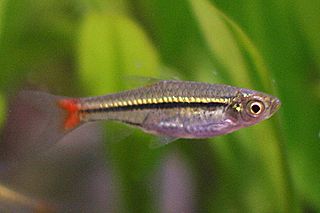 W
WThe blackline rasbora is a fish of the family Cyprinidae found in Asia in the Mekong, Chao Phraya, and Mae Klong basins, and also the northern Malay Peninsula. In the aquarium trade, it is known by a variety of other names, including red-tailed rasbora, bora bora rasbora, and brilliant rasbora.
 W
WThe bumpnose trevally, also known as the bumpnose kingfish or onion kingfish, is a species of relatively small inshore marine fish classified in the jack family Carangidae. The bumpnose trevally is fairly common in the tropical and subtropical waters of the Indo-west Pacific region, ranging from South Africa in the west to Japan and Samoa in the east. It is a small species by carangid standards, reaching a maximum known length of 32 cm, and can be distinguished from the similarly shaped Carangoides armatus by a distinct 'bump' on the snout, which gives the fish its common name. The species inhabits coastal waters, often living along bays and beaches, where it takes shrimp, small crabs, and juvenile fish as prey. The bumpnose trevally is of minor importance to fisheries throughout its range, taken by hook and line, trawls, and seine nets. It is also of minor importance to anglers, taken by baits from beaches and piers, and is considered a modest table fish.
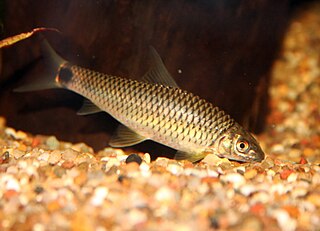 W
WCrossocheilus reticulatus is a freshwater fish in the family Cyprinidae from Southeast Asia. It grows to 17 cm (6.7 in) standard length.
 W
WDoryrhamphus negrosensis, commonly known as Negros pipefish, flagtail pipefish, Masthead Island pipefish or Queensland flagtail pipefish, is a species of marine fish of the family Syngnathidae. It is found in the Western Pacific Ocean, from Borneo to Vanuatu and the Yaeyama Islands to the Rowley Shoals and the Great Barrier Reef. It lives in mud flats and reefs, both coral and rocky, where it is often associated with sea urchins. It is a rather solitary species which may be found in pairs or small groups. It inhabits depths to 9 metres (30 ft), and can grow to lengths of 6.2 centimetres (2.4 in). Although little is known of its feeding habits, it is expected to feed on harpacticoid copepods, gammarid shrimps, and mysids, similar to other pipefish, it may also act as a cleaner fish like other species in the genus Doryrhamphus. This species is ovoviviparous, with males carrying eggs before giving birth to live young. Males may brood at 4.3 cm. It is a small bluish to bluish-grey pipefish which has a pale stripe along the dorsal side of the head and snout, and a dark fan-like caudal fin which has white margins and an orange base.
 W
WA Marine angelfish from the Western Pacific that occasionally makes its way into the aquarium trade. It grows to a size of 21 cm in length.
 W
WThe graceful shark or Queensland shark is a species of requiem shark, in the family Carcharhinidae, found in the tropical Indo-Pacific, from the Gulf of Aden to northern Australia. It is a midwater species that has been recorded to a depth of 50 m (160 ft). A stoutly built shark growing up to 1.7 m (5.6 ft) long, the graceful shark has a short, wedge-shaped snout, large, sickle-shaped pectoral fins and first dorsal fin, and black tips on most fins.
 W
WHucho bleekeri, or the Sichuan taimen, is a species of freshwater fish in the salmon family (Salmonidae), endemic to the Yangtze basin in China. Their typical habitat includes mountain streams and small rivers, typically being found in the catchment areas of the Dadu River in Sichuan and Qinghai Provinces, as well as the Hanjiang River. This particular fish population is largely threatened by habitat loss and illegal fishing, resulting in a "critically endangered" conservation status from the International Union for Conservation of Nature.
 W
WThe longfin catshark is a catshark of the family Scyliorhinidae found in the western Pacific from Japan to the Philippines, and the East and South China Seas, and the Kyūshū-Palau Ridge, at depths between 530 and 865 m. Its length is up to 48 cm.
 W
WThe longnose pygmy shark is a rare species of squaliform shark in the family Dalatiidae and the only member its genus. It is known only from a handful of specimens collected from the cold oceanic waters of the Southern Hemisphere, between the surface and a depth of 502 m (1,647 ft). Reaching 37 cm (15 in) in length, this diminutive shark is characterized by a slender, dark brown body with a very long, bulbous snout. In addition, it has two spineless dorsal fins of nearly equal size, with the origin of the first lying over the pectoral fin bases. The longnose pygmy shark does not appear substantially threatened by fisheries, and has been assessed as Least Concern by the International Union for Conservation of Nature (IUCN).
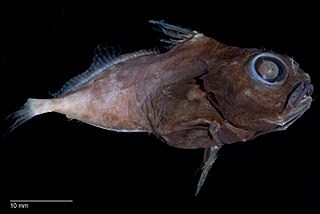 W
WMacrurocyttus acanthopodus, the dwarf dory, is a species of tinselfish native to the western Pacific Ocean where it has been found in the waters around the Philippines and Australia at a depth of around 878 metres (2,881 ft). This species is the only known member of its genus.
 W
WThe northern whitefin gudgeon is a species of freshwater fish in the family Cyprinidae. It is distributed in the northern Black Sea basin, southern Baltic Sea basin, southern North Sea basin. Also, reports from lakes Ilmen and Ladoga and its basins have been made, which are questionable. Their maximal length is 11.5 cm, with a maximal reported age of 5 years.
 W
WPuntigrus partipentazona, the partipentazona barb, is a species of cyprinid fish native to Southeast Asia where it is found in the Mekong, Mae Klong, and Chao Phraya basins of Thailand, the Malay Peninsula, and coastal streams of southeast Thailand and Cambodia where it occurs in streams and impoundments with dense weed growth. It can also be found in the aquarium trade. It is frequently misidentified as the similar Puntigrus tetrazona.
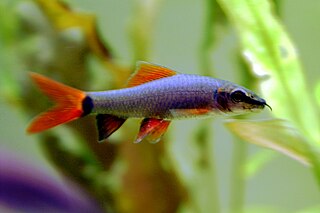 W
WThe rainbow shark is a species of Southeast Asian freshwater fish from the family Cyprinidae. It is also known as the ruby shark, red-fin shark, red-finned shark, rainbow sharkminnow, green fringelip labeo, whitefin shark and whitetail sharkminnow. It is a popular, semi-aggressive aquarium fish. Unlike true sharks, which belong to the Chondrichthyes lineage, the rainbow shark is an actinopterygiian.
 W
WRaitt's sand eel, also known as the lesser sand eel, is a small semi-pelagic ray-finned fish found in the North Atlantic Ocean. The Raitt's sand eel is member of the family Ammodytidae which includes all 31 species of sand eels, often referred to as sand lances. Contrary to their name sand eels, including Raitt's sand eel, are not true eels and instead belong to the order of “weever-like” fishes, the Trachiniformes.
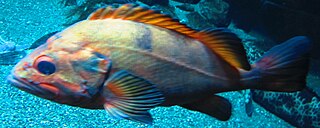 W
WSebastes melanostictus is a species of rockfish found in the North Pacific. It is commonly known as the blackspotted rockfish.
 W
WStarksia atlantica, the smooth-eye blenny, is a species of labrisomid blenny native to the western central Atlantic Ocean and the Caribbean Sea where it inhabits coral reefs at depths of around 8 metres (26 ft).
 W
WStarksia fasciata, the blackbar blenny, is a fish species of labrisomid blenny so far known only from around the Bahamas and Cuba. It inhabits shallow, rocky areas at depths of from 6 to 7 meters. This species can reach a length of 2.7 centimetres (1.1 in) SL.
 W
WThe Tasmanian mudfish, Neochanna cleaveri, is a small Australian amphidromous fish in the galaxiid family, of the order Osmeriformes.